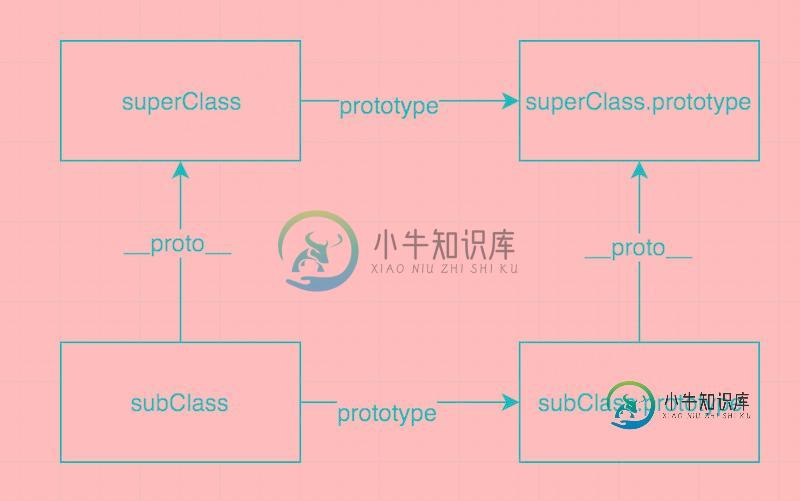详解ES6中class的实现原理
一、在ES6以前实现类和继承
实现类的代码如下:
function Person(name, age) {
this.name = name;
this.age = age;
}
Person.prototype.speakSomething = function () {
console.log("I can speek chinese");
};
实现继承的代码如下:一般使用原型链继承和callhtml" target="_blank">继承混合的形式
function Person(name) {
this.name = name;
}
Person.prototype.showName = function () {
return `名字是:${this.name}`;
};
function Student(name, skill) {
Person.call(this, name);//继承属性
this.skill = skill;
}
Student.prototype = new Person();//继承方法
二、ES6使用class定义类
class Parent {
constructor(name,age){
this.name = name;
this.age = age;
}
speakSomething(){
console.log("I can speek chinese");
}
}
经过babel转码之后
function _classCallCheck(instance, Constructor) {
if (!(instance instanceof Constructor)) {
throw new TypeError("Cannot call a class as a function");
}
}
var Parent = function () {
function Parent(name, age) {
_classCallCheck(this, Parent);
this.name = name;
this.age = age;
}
_createClass(Parent, [{
key: "speakSomething",
value: function speakSomething() {
console.log("I can speek chinese");
}
}]);
return Parent;
}();
可以看到ES6类的底层还是通过构造函数去创建的。
通过ES6创建的类,是不允许你直接调用的。在ES5中,构造函数是可以直接运行的,比如Parent()。但是在ES6就不行。我们可以看到转码的构造函数中有_classCallCheck(this, Parent)语句,这句话是防止你通过构造函数直接运行的。你直接在ES6运行Parent(),这是不允许的,ES6中抛出Class constructor Parent cannot be invoked without 'new'错误。转码后的会抛出Cannot call a class as a function.能够规范化类的使用方式。
转码中_createClass方法,它调用Object.defineProperty方法去给新创建的Parent添加各种属性。defineProperties(Constructor.prototype, protoProps)是给原型添加属性。如果你有静态属性,会直接添加到构造函数defineProperties(Constructor, staticProps)上。
三、ES6实现继承
我们给Parent添加静态属性,原型属性,内部属性。
class Parent {
static height = 12
constructor(name,age){
this.name = name;
this.age = age;
}
speakSomething(){
console.log("I can speek chinese");
}
}
Parent.prototype.color = 'yellow'
//定义子类,继承父类
class Child extends Parent {
static width = 18
constructor(name,age){
super(name,age);
}
coding(){
console.log("I can code JS");
}
}
经过babel转码之后
"use strict";
var _createClass = function () {
function defineProperties(target, props) {
for (var i = 0; i < props.length; i++) {
var descriptor = props[i];
descriptor.enumerable = descriptor.enumerable || false;
descriptor.configurable = true;
if ("value" in descriptor) descriptor.writable = true;
Object.defineProperty(target, descriptor.key, descriptor);
}
}
return function (Constructor, protoProps, staticProps) {
if (protoProps) defineProperties(Constructor.prototype, protoProps);
if (staticProps) defineProperties(Constructor, staticProps);
return Constructor;
};
}();
function _possibleConstructorReturn(self, call) {
if (!self) {
throw new ReferenceError("this hasn't been initialised - super() hasn't been called");
}
return call && (typeof call === "object" || typeof call === "function") ? call : self;
}
function _inherits(subClass, superClass) {
if (typeof superClass !== "function" && superClass !== null) {
throw new TypeError("Super expression must either be null or a function, not " + typeof superClass);
}
subClass.prototype = Object.create(superClass && superClass.prototype, {
constructor: {
value: subClass,
enumerable: false,
writable: true,
configurable: true
}
});
if (superClass) Object.setPrototypeOf ? Object.setPrototypeOf(subClass, superClass) : subClass.__proto__ = superClass;
}
function _classCallCheck(instance, Constructor) {
if (!(instance instanceof Constructor)) {
throw new TypeError("Cannot call a class as a function");
}
}
var Parent = function () {
function Parent(name, age) {
_classCallCheck(this, Parent);
this.name = name;
this.age = age;
}
_createClass(Parent, [{
key: "speakSomething",
value: function speakSomething() {
console.log("I can speek chinese");
}
}]);
return Parent;
}();
Parent.height = 12;
Parent.prototype.color = 'yellow';
//定义子类,继承父类
var Child = function (_Parent) {
_inherits(Child, _Parent);
function Child(name, age) {
_classCallCheck(this, Child);
return _possibleConstructorReturn(this, (Child.__proto__ || Object.getPrototypeOf(Child)).call(this, name, age));
}
_createClass(Child, [{
key: "coding",
value: function coding() {
console.log("I can code JS");
}
}]);
return Child;
}(Parent);
Child.width = 18;
构造类的方法都没变,只是添加了_inherits核心方法来实现继承。具体步骤如下:
首先是判断父类的类型,然后:
subClass.prototype = Object.create(superClass && superClass.prototype, {
constructor: {
value: subClass,
enumerable: false,
writable: true,
configurable: true
}
});
这段代码翻译下来就是
function F(){}
F.prototype = superClass.prototype
subClass.prototype = new F()
subClass.prototype.constructor = subClass
接下来就是subClass.__proto__ = superClass
_inherits核心思想就是下面两句:
subClass.prototype.__proto__ = superClass.prototype subClass.__proto__ = superClass
如下图所示:

首先 subClass.prototype.__proto__ = superClass.prototype保证了子类的实例instanceof父类是true,子类的实例可以访问到父类的属性,包括内部属性,以及原型属性。
其次,subClass.__proto__ = superClass,保证了静态属性也能访问到,也就是这个例子中的Child.height。
以上就是详解ES6中class的实现原理的详细内容,更多关于ES6中class的实现原理的资料请关注小牛知识库其它相关文章!
-
本文向大家介绍ES6中的类(Class)示例详解,包括了ES6中的类(Class)示例详解的使用技巧和注意事项,需要的朋友参考一下 类的基本语法 ES6提供了更接近面向对象(注意:javascript本质上是基于对象的语言)语言的写法,引入了Class(类)这个概念,作为对象的模板。通过class关键字,可以定义类。 基本上,ES6的class可以看作只是一个语法糖,它的绝大部分功能,ES5都可以
-
本文向大家介绍ES6 class类链式继承,实例化及react super(props)原理详解,包括了ES6 class类链式继承,实例化及react super(props)原理详解的使用技巧和注意事项,需要的朋友参考一下 本文实例讲述了ES6 class类链式继承,实例化及react super(props)原理。分享给大家供大家参考,具体如下: class定义类是es6提供的新的api,比
-
本文向大家介绍详解Android中Handler的实现原理,包括了详解Android中Handler的实现原理的使用技巧和注意事项,需要的朋友参考一下 在 Android 中,只有主线程才能操作 UI,但是主线程不能进行耗时操作,否则会阻塞线程,产生 ANR 异常,所以常常把耗时操作放到其它子线程进行。如果在子线程中需要更新 UI,一般是通过 Handler 发送消息,主线程接受消息并且进行相应的
-
本文向大家介绍ReentrantLock实现原理详解,包括了ReentrantLock实现原理详解的使用技巧和注意事项,需要的朋友参考一下 以下是本篇文章的大纲 1 synchronized和lock 1.1 synchronized的局限性 1.2 Lock简介 2 AQS 3 lock()与unlock()实现原理 3.1 基础知识 3.2 内部结构 3
-
本文向大家介绍Laravel中间件实现原理详解,包括了Laravel中间件实现原理详解的使用技巧和注意事项,需要的朋友参考一下 本文实例讲述了Laravel的中间件实现原理。分享给大家供大家参考,具体如下: #1 什么是中间件? 对于一个Web应用来说,在一个请求真正处理前,我们可能会对请求做各种各样的判断,然后才可以让它继续传递到更深层次中。而如果我们用if else这样子来,一旦需要判断的条件
-
本文向大家介绍详解 Java HashMap 实现原理,包括了详解 Java HashMap 实现原理的使用技巧和注意事项,需要的朋友参考一下 HashMap 是 Java 中最常见数据结构之一,它能够在 O(1) 时间复杂度存储键值对和根据键值读取值操作。本文将分析其内部实现原理(基于 jdk1.8.0_231)。 数据结构 HashMap 是基于哈希值的一种映射,所谓映射,即可以根据 key

